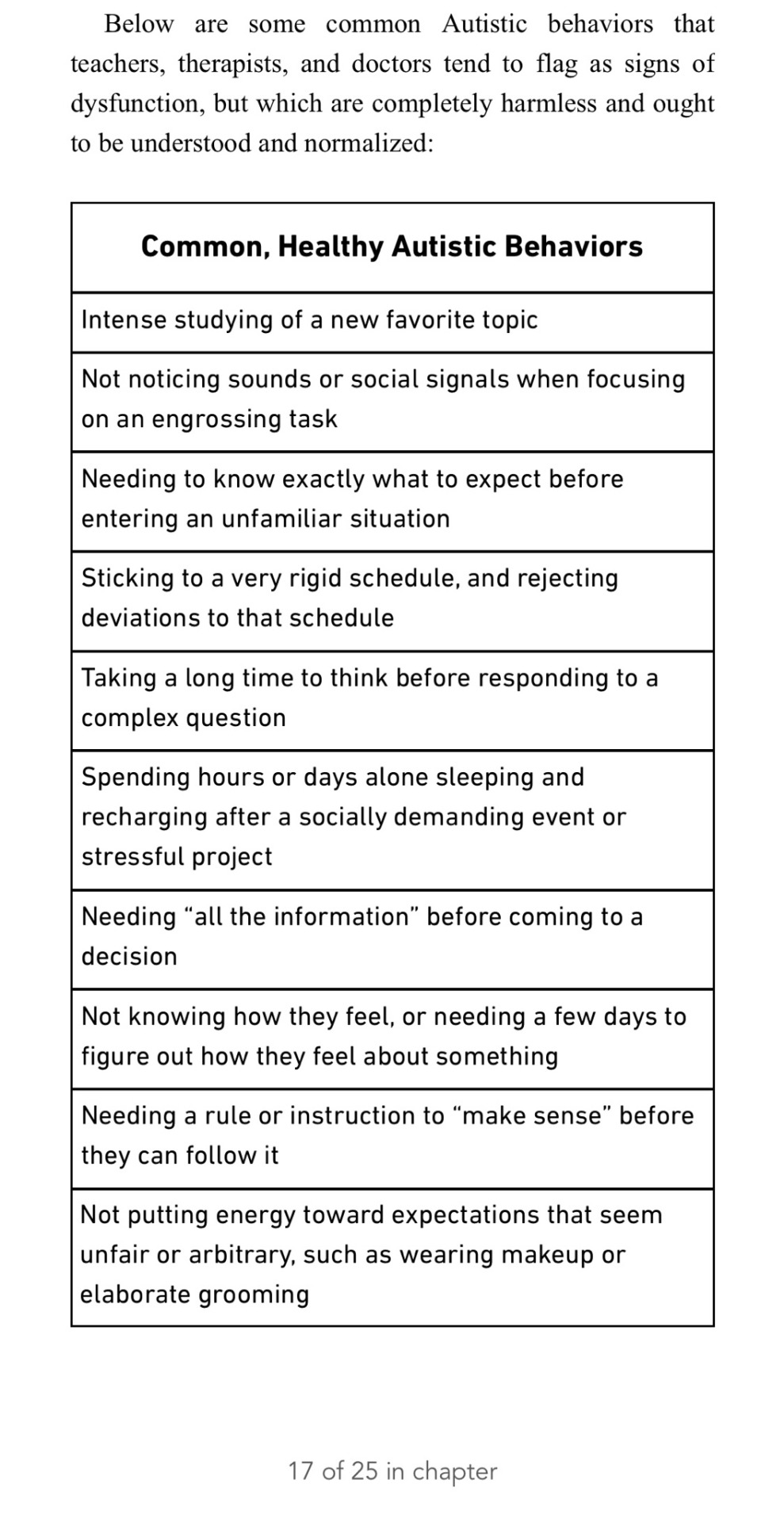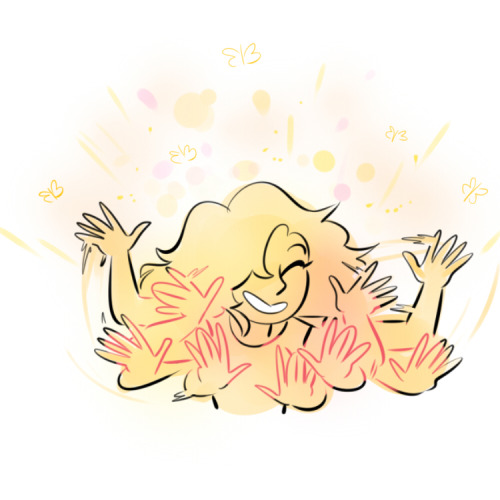AND EVEN WHEN YOUR HOPE IS GONE

AND EVEN WHEN YOUR HOPE IS GONE
More Posts from Vesperlf and Others

POV: mister Devon Price, PhD, telling me that I am right about everything
Source: Unmasking Autism, discovering the new faces of neurodiversity







happy stimming

I love talking with neurotypical people about my executive dysfunction because I'm like "yeah there's this invisible wall in my head that I'm incapable of getting past no matter what I do and it stops me from doing things" and they're like what the actual fuck
Meanwhile other neurodivergents are like

People, especially games, get eldritch madness wrong a lot and it’s really such a shame.
An ant doesn’t start babbling when they see a circuit board. They find it strange, to them it is a landscape of strange angles and humming monoliths. They may be scared, but that is not madness.
Madness comes when the ant, for a moment, can see as a human does.
It understands those markings are words, symbols with meaning, like a pheromone but infinitely more complex. It can travel unimaginable distances, to lands unlike anything it has seen before. It knows of mirth, embarrassment, love, concepts unimaginable before this moment, and then…
It’s an ant again.
Echoes of things it cannot comprehend swirl around its mind. It cannot make use of this knowledge, but it still remembers. How is it supposed to return to its life? The more the ant saw the harder it is for it to forget. It needs to see it again, understand again. It will do anything to show others, to show itself, nothing else in this tiny world matters.
This is madness.
I think the bicycle helmet discourse really just reinforces the idea that people believe that accidents only happen to the stupid and careless, and that people who get hurt somehow deserve it. And since nobody wants to believe themselves to be stupid, or thinks they could be careless or distracted, it's not necessary to take precautions.
And then they take safety advice as an insult because telling someone to be safe is seen as an accusation of being stupid and irresponsible, and not just a value neutral acknowledgement of statistical inevitably. We see it with masks, and seatbelts, and now bicycle helmets because everyone wants to believe they're too clever to get hurt, and too lucky to get hurt badly, until suddenly you're not and you have to resign, in shame, to being one of the people you previously saw as annoying nags, assuming you're even still alive.
![Via @swatercolor [insta]](https://64.media.tumblr.com/04b3b4aa7071ddc1ede7b3fa7864d77c/7f6b4c3f33a6dca8-7b/s500x750/850dec44158937698829c554c1986d33f0a08bf3.jpg)
via @swatercolor [insta]
I need more than infinite time. Like, give me a sideways timeline where I can spend forever on a specific project without time passing in the main world, but I don't need just one of those.
I need like five. I want to splinter into a bunch of different directions, all somehow at right angles to the timeline, only to slowly angle their ways back to this timeline and drop masterpieces of arbitrary amounts of work spent in these little atemporal cloisters

The data does not support the assumption that all burned out people can “recover.” And when we fully appreciate what burnout signals in the body, and where it comes from on a social, economic, and psychological level, it should become clear to us that there’s nothing beneficial in returning to an unsustainable status quo.
The term “burned out” is sometimes used to simply mean “stressed” or “tired,” and many organizations benefit from framing the condition in such light terms. Short-term, casual burnout (like you might get after one particularly stressful work deadline, or following final exams) has a positive prognosis: within three months of enjoying a reduced workload and increased time for rest and leisure, 80% of mildly burned-out workers are able to make a full return to their jobs.
But there’s a lot of unanswered questions lurking behind this happy statistic. For instance, how many workers in this economy actually have the ability to take three months off work to focus on burnout recovery? What happens if a mildly burnt-out person does not get that rest, and has to keep toiling away as more deadlines pile up? And what is the point of returning to work if the job is going to remain as grueling and uncontrollable as it was when it first burned the worker out?
Burnout that is not treated swiftly can become far more severe. Clinical psychologist and burnout expert Arno van Dam writes that when left unattended (or forcibly pushed through), mild burnout can metastasize into clinical burnout, which the International Classification of Diseases defines as feelings of energy depletion, increased mental distance, and a reduced sense of personal agency. Clinically burned-out people are not only tired, they also feel detached from other people and no longer in control of their lives, in other words.
Unfortunately, clinical burnout has quite a dismal trajectory. Multiple studies by van Dam and others have found that clinical burnout sufferers may require a year or more of rest following treatment before they can feel better, and that some of burnout’s lingering effects don’t go away easily, if at all.
In one study conducted by Anita Eskildsen, for example, burnout sufferers continued to show memory and processing speed declines one year after burnout. Their cognitive processing skills improved slightly since seeking treatment, but the experience of having been burnt out had still left them operating significantly below their non-burned-out peers or their prior self, with no signs of bouncing back.
It took two years for subjects in one of van Dam’s studies to return to “normal” levels of involvement and competence at work. following an incident of clinical burnout. However, even after a multi-year recovery period they still performed worse than the non-burned-out control group on a cognitive task designed to test their planning and preparation abilities. Though they no longer qualified as clinically burned out, former burnout sufferers still reported greater exhaustion, fatigue, depression, and distress than controls.
In his review of the scientific literature, van Dam reports that anywhere from 25% to 50% of clinical burnout sufferers do not make a full recovery even four years after their illness. Studies generally find that burnout sufferers make most of their mental and physical health gains in the first year after treatment, but continue to underperform on neuropsychological tests for many years afterward, compared to control subjects who were never burned out.
People who have experienced burnout report worse memories, slower reaction times, less attentiveness, lower motivation, greater exhaustion, reduced work capability, and more negative health symptoms, long after their period of overwork has stopped. It’s as if burnout sufferers have fallen off their previous life trajectory, and cannot ever climb fully back up.
And that’s just among the people who receive some kind of treatment for their burnout and have the opportunity to rest. I found one study that followed burned-out teachers for seven years and reported over 14% of them remained highly burnt-out the entire time. These teachers continued feeling depersonalized, emotionally drained, ineffective, dizzy, sick to their stomachs, and desperate to leave their jobs for the better part of a decade. But they kept working in spite of it (or more likely, from a lack of other options), lowering their odds of ever healing all the while.
Van Dam observes that clinical burnout patients tend to suffer from an excess of perseverance, rather than the opposite: “Patients with clinical burnout…report that they ignored stress symptoms for several years,” he writes. “Living a stressful life was a normal condition for them. Some were not even aware of the stressfulness of their lives, until they collapsed.”
Instead of seeking help for workplace problems or reducing their workload, as most people do, clinical burnout sufferers typically push themselves through unpleasant circumstances and avoid asking for help. They’re also less likely to give up when placed under frustrating circumstances, instead throttling the gas in hopes that their problems can be fixed with extra effort. They become hyperactive, unable to rest or enjoy holidays, their bodies wired to treat work as the solution to every problem. It is only after living at this unrelenting pace for years that they tumble into severe burnout.
Among both masked Autistics and overworked employees, the people most likely to reach catastrophic, body-breaking levels of burnout are the people most primed to ignore their own physical boundaries for as long as possible. Clinical burnout sufferers work far past the point that virtually anyone else would ask for help, take a break, or stop caring about their work.
And when viewed from this perspective, we can see burnout as the saving grace of the compulsive workaholic — and the path to liberation for the masked disabled person who has nearly killed themselves trying to pass as a diligent worker bee.
I wrote about the latest data on burnout "recovery," and the similarities and differences between Autistic burnout and conventional clinical burnout. The full piece is free to read or have narrated to you in the Substack app at drdevonprice.substack.com
foam loam loom boom boot bolt molt malt male gale game tame tome tone tune tube lube lobe robe rote mote moth mosh posh pooh pool cool :)
-
 goforbrooke reblogged this · 4 weeks ago
goforbrooke reblogged this · 4 weeks ago -
 goforbrooke reblogged this · 4 weeks ago
goforbrooke reblogged this · 4 weeks ago -
 penofwildfire liked this · 1 month ago
penofwildfire liked this · 1 month ago -
 user-without-a-cool-acronym reblogged this · 1 month ago
user-without-a-cool-acronym reblogged this · 1 month ago -
 diagata liked this · 2 months ago
diagata liked this · 2 months ago -
 greenlimg09 liked this · 5 months ago
greenlimg09 liked this · 5 months ago -
 shpjarkley liked this · 5 months ago
shpjarkley liked this · 5 months ago -
 heroniclesedenia liked this · 6 months ago
heroniclesedenia liked this · 6 months ago -
 the-kickster reblogged this · 6 months ago
the-kickster reblogged this · 6 months ago -
 sachyriel reblogged this · 6 months ago
sachyriel reblogged this · 6 months ago -
 sachyriel liked this · 6 months ago
sachyriel liked this · 6 months ago -
 it-me-dragon-gal reblogged this · 6 months ago
it-me-dragon-gal reblogged this · 6 months ago -
 cryptdidnt liked this · 6 months ago
cryptdidnt liked this · 6 months ago -
 frogwithhumanteeth liked this · 6 months ago
frogwithhumanteeth liked this · 6 months ago -
 snailfarts reblogged this · 6 months ago
snailfarts reblogged this · 6 months ago -
 t-lomeres liked this · 6 months ago
t-lomeres liked this · 6 months ago -
 being-of-rain liked this · 6 months ago
being-of-rain liked this · 6 months ago -
 punk-moth liked this · 6 months ago
punk-moth liked this · 6 months ago -
 chaosbluebird reblogged this · 6 months ago
chaosbluebird reblogged this · 6 months ago -
 chaosbluebird liked this · 6 months ago
chaosbluebird liked this · 6 months ago -
 high-hrothgal reblogged this · 6 months ago
high-hrothgal reblogged this · 6 months ago -
 mrfiysh reblogged this · 6 months ago
mrfiysh reblogged this · 6 months ago -
 guidingarc reblogged this · 6 months ago
guidingarc reblogged this · 6 months ago -
 skeleetrom liked this · 6 months ago
skeleetrom liked this · 6 months ago -
 the-good-luck-anomaly reblogged this · 6 months ago
the-good-luck-anomaly reblogged this · 6 months ago -
 whittling-while-i-work reblogged this · 6 months ago
whittling-while-i-work reblogged this · 6 months ago -
 tiredspacedragon reblogged this · 6 months ago
tiredspacedragon reblogged this · 6 months ago -
 it-me-dragon-gal reblogged this · 6 months ago
it-me-dragon-gal reblogged this · 6 months ago -
 matau-the-228th reblogged this · 6 months ago
matau-the-228th reblogged this · 6 months ago -
 leftyllama reblogged this · 6 months ago
leftyllama reblogged this · 6 months ago -
 whisperportedly liked this · 6 months ago
whisperportedly liked this · 6 months ago -
 huhwhatname liked this · 6 months ago
huhwhatname liked this · 6 months ago -
 panzathoth reblogged this · 6 months ago
panzathoth reblogged this · 6 months ago -
 panzathoth liked this · 6 months ago
panzathoth liked this · 6 months ago -
 skeltal-artist liked this · 6 months ago
skeltal-artist liked this · 6 months ago -
 carnelianfoxx reblogged this · 6 months ago
carnelianfoxx reblogged this · 6 months ago -
 toadamakoro1488 reblogged this · 8 months ago
toadamakoro1488 reblogged this · 8 months ago -
 toadamakoro1488 liked this · 8 months ago
toadamakoro1488 liked this · 8 months ago -
 weifanjun liked this · 8 months ago
weifanjun liked this · 8 months ago -
 sonicfan510152025 liked this · 9 months ago
sonicfan510152025 liked this · 9 months ago -
 redoubtableeagle liked this · 9 months ago
redoubtableeagle liked this · 9 months ago -
 ignitiontrilogy reblogged this · 10 months ago
ignitiontrilogy reblogged this · 10 months ago -
 mha-gremlin liked this · 10 months ago
mha-gremlin liked this · 10 months ago -
 not-here-anymore-but-i-tried liked this · 1 year ago
not-here-anymore-but-i-tried liked this · 1 year ago -
 byeclownguy liked this · 1 year ago
byeclownguy liked this · 1 year ago -
 askatriangleandastar reblogged this · 1 year ago
askatriangleandastar reblogged this · 1 year ago -
 sherbertclown reblogged this · 1 year ago
sherbertclown reblogged this · 1 year ago -
 sherbertclown liked this · 1 year ago
sherbertclown liked this · 1 year ago
